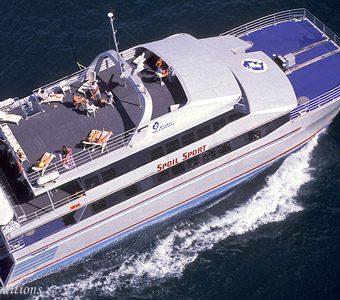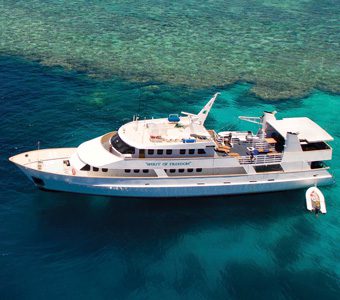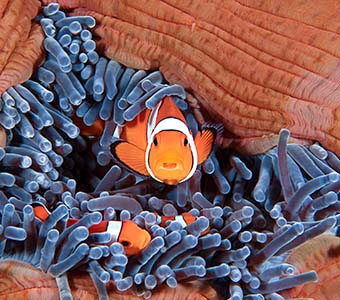After a few weeks surveying the northern reaches of the Great Barrier Reef after Cyclone Jasper, the consensus is: the Reef held its own. Here’s a summary of reef reports & photos – all taken within days of Jasper passing through.
Cairns Outer Reef
Marine biologist, Master Reef Guide, Eric Fisher, General Manager of GBR Biology, is decidedly upbeat about Jasper’s aftermath.
“At Moore Reef, we always like to show visitors the Reef’s resilience by taking snorkellers to the outer wall, which, before Yasi, was full of coral, only to be stripped back to bare pavement. It’s since bounced back, unassisted, to 90 per cent coral cover. Cyclone Jasper created some minor fragmentation, primarily involving branching and plate corals, which is not a bad thing. These fast-growing corals benefit from fragmentation and dispersal to form new colonies. So, you can end up with increased coral cover after these events.”
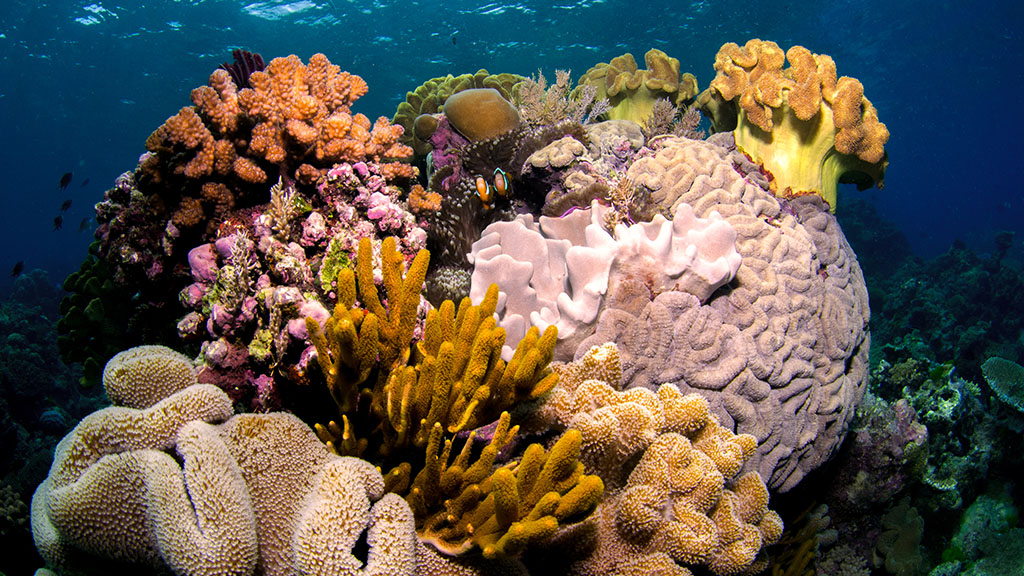
Meanwhile, TUSA Reef Tours Master Reef Guide Mel Alps, discovered “an early Christmas gift” upon venturing to her favourite dive site, Troppo’s on Norman Reef, on 22 December.

“Troppo’s is at the top of that reef system, so a lot of past events have given it a hard time, and I went out there expecting to find damage. Instead, I flipped a few dislodged plate corals, before delighting in the surprise discovery that Cyclone Jasper had positively changed the face of an area dubbed the “Ski Slope”, by shifting a tonne of sand (likely dumped by Cyclone Yasi) and revealing coral and reef substrate.
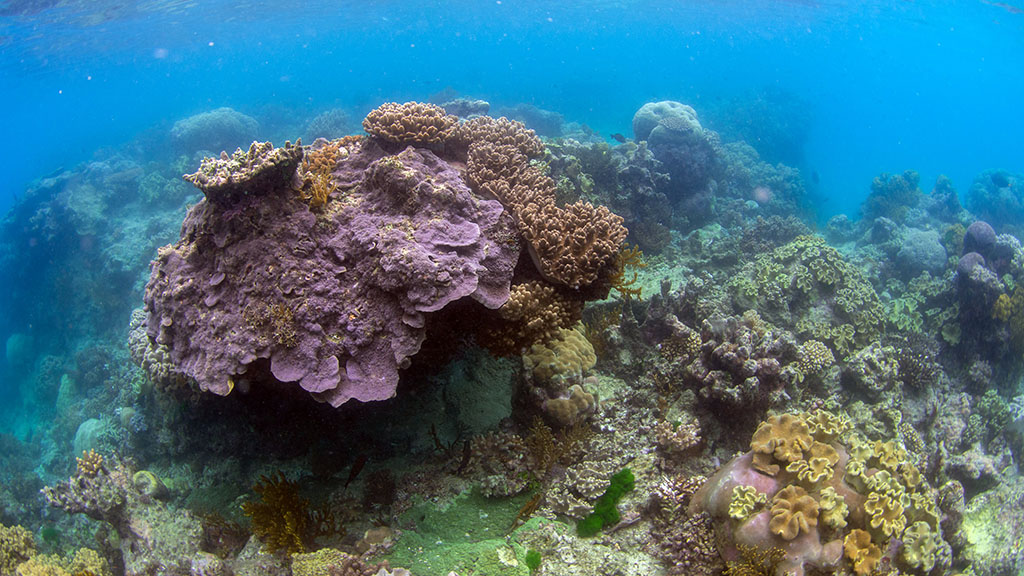
“You can now see where all the coral would have been, and with the sand gone, the Reef wall has a better chance of regenerating. What’s exciting is parrotfish are already moving in and starting to eat algae that’s growing on the rock that’s been revealed.”
Port Douglas
In Port Douglas, bracing themselves for a “possible crash scene” following a two-week grounding in Port Douglas, Wavelength Reef Cruises owners and marine biologists, John and Jenny Edmondson, returned to survey sites at Opal Reef on 19 December.
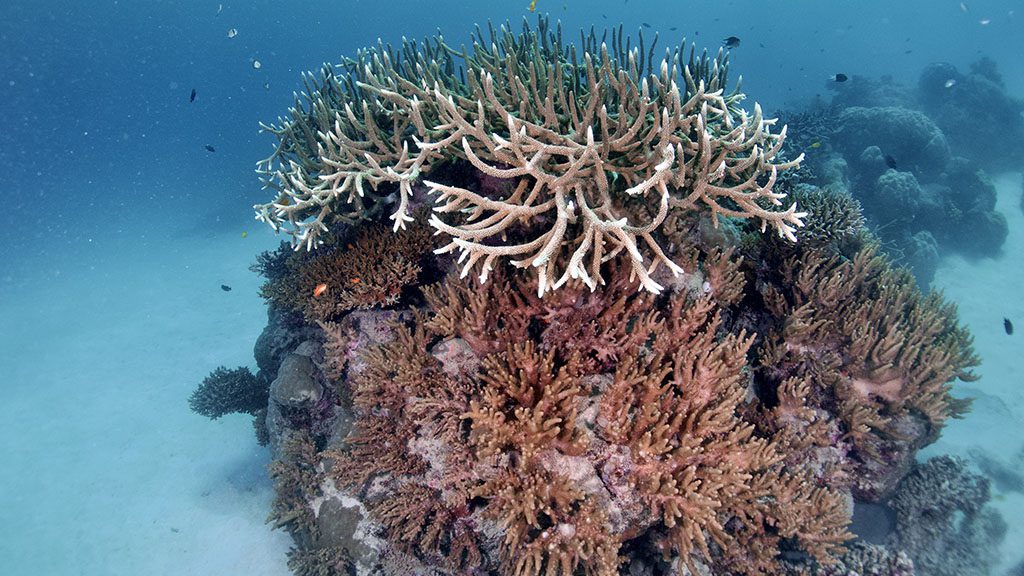
“The only real impact is localised to one small alley in the middle of Long Bommie with fragmentation and plate corals turned upside down, but either side, there’s literally no damage. It won’t take long to recover and replant those fragments, and within a couple of years it will be back to normal.”
Coral Sea Reefs – Osprey, Holmes and Bougainville
Both Mike Ball Dive Expeditions and Spirit of Freedom have visited the Coral Sea in the days following Jasper. Mike Ball Master Reef Guide Pablo Cogollas told Diveplanit that after five days diving over 20 dive sites across three reefs they saw little to no damage.
“Osprey Reef does not have any signs of impact it – it was not in the cyclone path. We got to dive the North, West and South. Bougainville Reef had perhaps five percent of surface coral cover impacted only on the eastern side of the reef. We got to dive the South, West and East, and only one of our four dive sites had some hard corals that have been turned over. We also explored Holmes Reef, which is within the closest proximity to Cyclone Jasper’s path, but we did not see any impact.”
According to Spirit of Freedom’s Melissa Alps:
“The report from the crew is that the Coral Sea has sustained very little damage from Cyclone Jasper. The only thing they said was there was a few plate/bushy and branching coral on Bougainville have been damaged. The conditions out there at the moment are awesome, the visibility is great and the surface of the water is flat/calm.”

Ribbon Reefs
Both Mike Ball and Spirit of Freedom Master Reef Guides report that the Ribbon Reefs are little affected by Jasper. While some parts of these reefs were in Jasper’s path, hardly any seem to have suffered serious damage. According to Pablo Cogollas;
“At Cod Hole we saw a few overturned plate corals in the shallow parts of the dive site, which we have up righted, but the site is otherwise unscathed.”
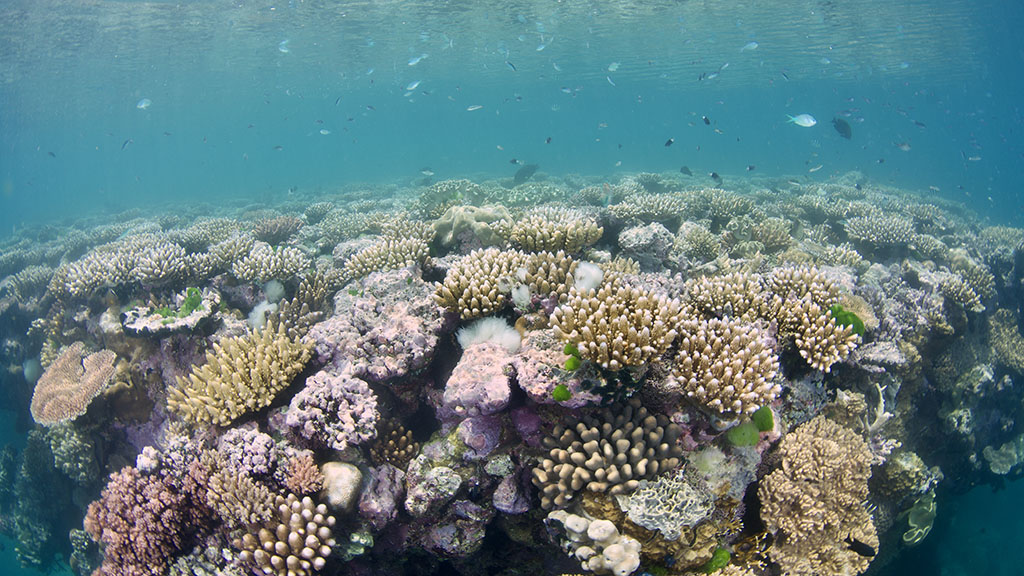
Spirit of Freedom operations manager Melissa Alps told Diveplanit that the crew has reported damage between Ribbon 3 and 5 – mainly to surface coral cover – but that the more northern reefs were virtually unscathed.
Back in Cairns, this closing comment from Eric Fisher: “We’ve had a two-degree drop in temperature, so the water is around 27°C now, which means this event could mitigate fears of bleaching.”
Our Diveplanit team is constantly in touch with our wide network of dive operators and marine scientists working on the Great Barrier Reef. Talk to us about visiting the Great Barrier Reef.

